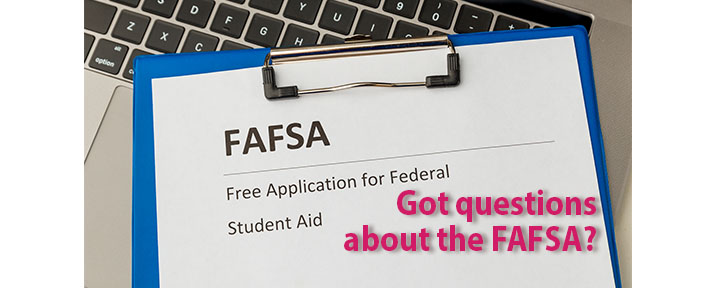
Got a kid applying to colleges? Wonder what kind of financial aid and scholarships you’ll receive? You need to complete the FAFSA now. They’ve improved their free application but everyone still seems to have lots of questions. Check out this article that lays out what to expect after you submit the application and what to do if you need to make changes to your information.

Got a kid applying to colleges? Wonder what kind of financial aid and scholarships you’ll receive? You need to complete the FAFSA now. They’ve improved their free application but everyone still seems to have lots of questions. Check out this article that lays out what to expect after you submit the application and what to do if you need to make changes to your information.

College-bound students, and their parents, are making smart decisions when choosing undergraduate colleges. Even when students get into their first-choice colleges, students are carefully reviewing scholarship and financial aid offers and opting not to jump into huge debt at the more prestigious institutions.
Students are more cognizant of the long-term financial effect of student debt on purchasing their first homes, starting families, and building personal portfolios. It used to be that students would insist on going to the most selective college and parents would dip into their home’s equity or retirement savings to grant their children’s and their own bragging rights. Not anymore.
Over the past few years (even pre-COVID-19), students have been opting for in-state public universities when financial aid offers at the ivies and other selective colleges didn’t substantially reduce the tuition cost. This is especially true for students who intend to pursue higher degrees.
I believe students can get an excellent education and great prospects for higher ed and great careers without paying exorbitant fees ($300,000+). By organizing a comprehensive 4-year plan, students can take interesting classes (and their prerequisites) while satisfying major and general ed requirements, and still do research, internships, and clubs.
In addition to gaining the experience and knowledge through their undergraduate programs, students can also do projects to demonstrate their acumen and potential to future admissions committees and employers. It’s not so much about the college as it is about the student.
Glad to see students making well-thought out decisions based on what they need and want, and not on the US News and World rankings.

When colleges sent their students home last March 2020, no one knew that they wouldn’t return to campus in just a few weeks. Colleges, schools, parents, and students were making decisions and predictions every 3-4 weeks until summer rolled around. Since then, parents and students have demanded refunds for dorms and meals they couldn’t use or consume, and then they asked for partial refunds due to the online instruction that we all know was not up to par.
Now colleges are making decisions about opening their campuses up in the fall, winter, or spring based on finances. Well, of course they care about their faculty, students, and staff but without tuition and funds for housing and meal plans, many colleges are facing financial ruin. Colleges are scrambling to improve online lectures, interactions with students, socially-distanced labs, and the college experience. They are remodeling dorms, bathrooms, classrooms, lecture halls, and athletic facilities. All of this takes millions of dollars that colleges weren’t expecting to dole out in a short window of time.
Many colleges are offering 10% off tuition and student activities fees for fall term, and most aren’t charging for room and board. This helps all students, but not all college students are in the same financial place. Some colleges are doubling awards for existing scholarships so students who obviously need financial aid will get twice as much during this pandemic. This helps even the playing field because those who can pay $50,000 a year for tuition without assistance probably don’t need a 10% refund. Right?
I’m hoping that all colleges offer the financial support that low-income students need so that they don’t drop out of school. These low-income students are largely black and Hispanic. Colleges need funds to keep their doors open and to do the remodeling and restructuring to bring students back to campus again. Seems to me that an equitable way to accomplish this is to charge high-income students full tuition and room/board acknowledging that these funds will help the college prepare for on-campus classes for all.
If your child will be starting college in the fall of 2018, it’s time to get ready for the financial aid process. The 2018-2019 Free Application for Federal Student Aid (FAFSA) opens on October 1st. For financial aid it’s first come, first served! So, sharpen your pencils and do the following 3 things:
- Get your Federal Student Aid (FSA) ID
- Get your 2016 Tax Records and Social Security Numbers
- Complete your FAFSA before March 2, 2018
Students who qualify for the California Dream Act (CADAA) and the Chafee Grant for Foster Youth can attend the free Cash for College workshops in California. Sign up for the 100+ workshops to learn more about moneys available.
In order to receive scholarship funds, you need to complete the FAFSA and indicate which colleges you’re applying to. After the colleges receive your Student Aid Report (SAR) from your FAFSA application, they will calculate your financial need and create scholarship/loan offers if your child receives an admissions offer. Good luck!

